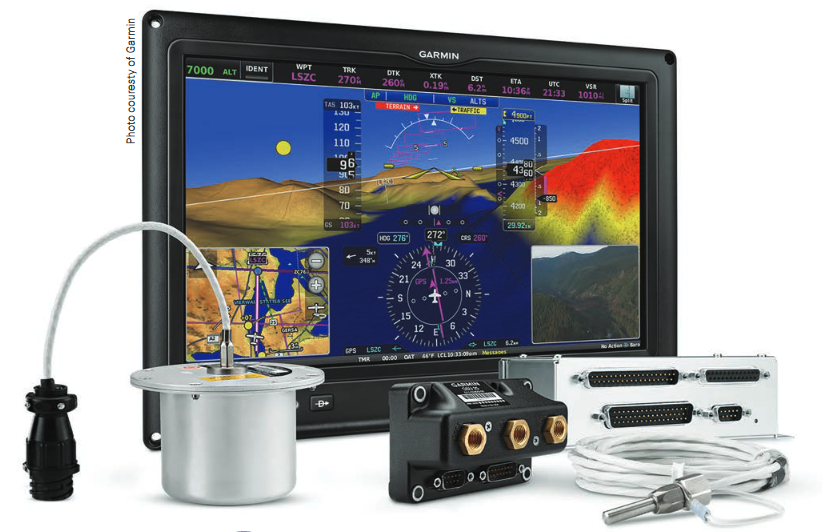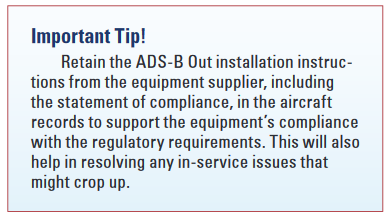ADS-B Light
Exploring ADS-B Out Options for Light-Sport and Experimental Aircraft
Source: FAA Safety Briefing Jan/Feb 2019
By: Tom Hoffmann

If you are the owner of a light-sport or experimental aircraft, you’re probably aware that your aircraft can use uncertified ADS-B Out equipment to meet the impending 2020 mandate. This option can certainly make things easier in some respects, but there are some important details that you’ll want to consider to ensure your equipment meets the requirements of the new airspace rule.
Equipment Check
For starters, if you are considering using uncertified ADS-B Out equipment, check your airworthiness certificate. You can install uncertified ADS-B Out systems only on amateur-built aircraft and light-sport aircraft with an experimental airworthiness certificate, as well as on special light-sport aircraft (with some restrictions on the installation end). Any type-certificated aircraft must use FAA-approved ADS-B Out equipment and obtain installation certification. Keep in mind that even if you are able to use an uncertified ADS-B Out system, it must still meet the performance requirements of the FAA Technical Standard Order for 1090 MHz equipment (TSO-C166b), or for Universal Access Transceiver (UAT) 978 MHz equipment (TSO-C154c).
This is important because, unless specifically authorized by ATC, uncertified ADS-B transmitters that do not meet the performance requirements of an ADS-B Out TSO are not permitted to operate in airspace requiring ADS-B Out after January 1, 2020.
Air Traffic Control (ATC) would not use the data from transmitters that do not meet most of the performance requirements listed in the regulations for ADS-B Out performance (Title 14 Code of Federal Regulations (14 CFR) section 91.227). This means ATC cannot provide flight-following services or separation services to these aircraft.
To qualify non-TSO equipment as compliant for operations in ADS-B airspace, the avionics manufacturer must provide a statement of compliance that indicates the equipment — when installed in accordance with the installation instructions — complies with all requirements of 14 CFR section 91.227, and with the performance requirements of the appropriate TSO. Manufacturers of uncertified ADS-B Out equipment are expected to perform the appropriate engineering efforts to ensure their systems meet the required specifications. They should also be able to provide product support to include design changes, equipment modifications (or instructions for performing them), and revisions to the installation, operating, and maintenance instructions.
Installation Check
Along with a statement of compliance, owners equipping with non-TSO systems should also obtain installation instructions from the applicable avionics manufacturer. These manufacturers should consider the guidance in AC 20-165, Airworthiness Approval of Automatic Dependent Surveillance - Broadcast OUT Systems when creating installation instructions.
For special light-sport aircraft (SLSA) owners, the installation of any ADS-B Out equipment (certified or non-certified) must be performed in accordance with an applicable consensus standard and authorized by the aircraft’s manufacturer. This installation authorization has presented a challenge for some LSA owners whose aircraft manufacturer either went out of business or decided not to support and approve an ADS-B Out installation process.
As a workaround to either of these situations, the LSA owner/operator may continue to operate the aircraft without ADS-B Out in allowable airspace, or exchange the SLSA airworthiness certificate for an experimental LSA special airworthiness certificate and install the ADS-B Out as an alteration under the provision of the experimental LSA operating limita-tions. Another option for those “orphaned” LSA aircraft is to find a viable entity, such as another manufacturer, type club, user group, or other interested party, to provide the continued airworthiness support needed to be able to install the ADS-B Out system and maintain the SLSA airworthiness certificate.
Another consideration for both LSA and experimental aircraft owners is choosing and installing a position source for their ADS-B system. For GPS equipment, you may install an uncertified GPS on amateur-built and light-sport aircraft with experimental airworthiness certificates, but it must meet the performance requirements of a GPS TSO. Position sources that do not meet the performance requirements of a GPS TSO will not comply with 14 CFR section 91.227 and will not be permitted to operate in airspace requiring ADS-B Out.
Although the list is limited to TSO-certified ADS-B products, you can search on the FAA’s website for equipment options at www.faa.gov/air_traffic/technology/equipadsb.

Operation Check
The FAA continuously monitors compliance to the ADS-B Out equipment performance require-ments. As of November 1, 2018, the total number of LSA and experimental aircraft that were equipped with ADS-B Out was 6,139, but 1,637 of those air-craft had systems with non-performing emitters (i.e., systems that did not meet the performance requirements). While that number is beginning to decrease, the best way to get off and stay off that list is to perform a Public ADS-B Performance Report (PAPR) request. A PAPR request will verify the per-formance of your ADS-B Out system and identify any equipment non-compliance conditions. The FAA encourages operators to perform a PAPR request after ADS-B system installation and at least annually thereafter. You can perform a PAPR request free at any time by going to https://adsbperformance.faa.gov/PAPRRequest.aspx
Tom Hoffmann is the managing editor of FAA Safety Briefing. He is a commercial pilot and holds an A&P certificate. |